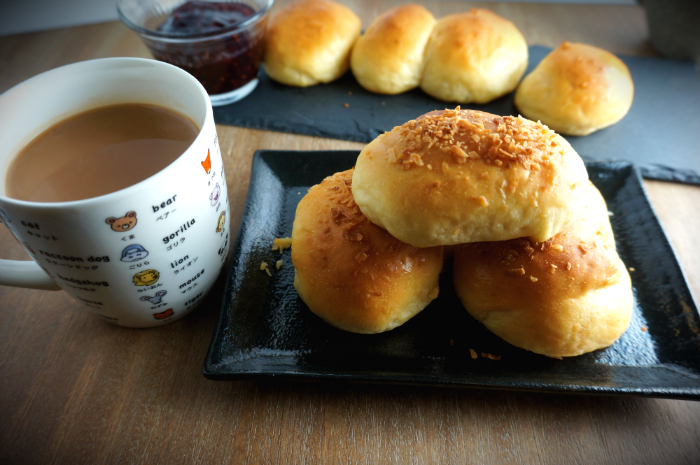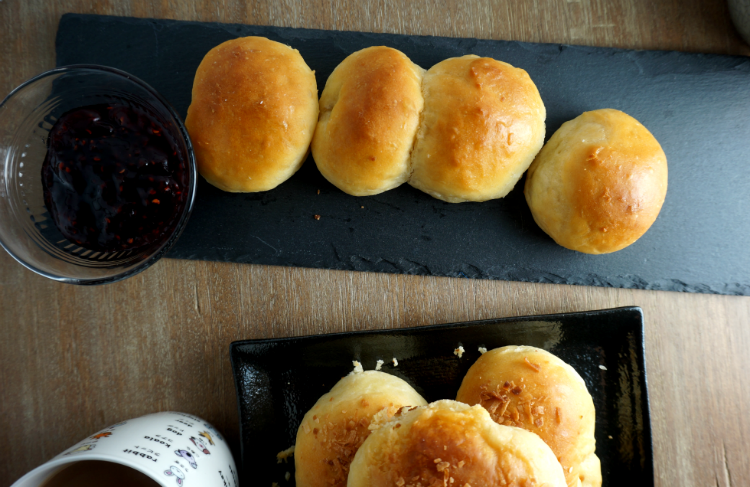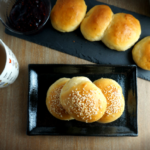
When I was young girl, my older brother had me convinced that I was not my parents’ biological child. He had conjured a story that involved my parents discovering a crying infant (me) in a dumpster behind their local grocery store. I won’t get into the details of his story – it was elaborate and given that I looked like neither of my parents at the time (whereas he took after mum, and my younger brother took after dad), I was convinced for at least 8 years of my life that I was a dumpster baby. The joys of being his punching bag younger sister!
Obviously, I don’t believe that (so much) anymore. Often, I catch myself in the mirror and realize just how much I actually resemble my parents. I have my dad’s tiny eyes and the laugh lines that hug his smiles, and I share my mum’s petite stature and youthful round cheeks. I’ve also noticed that I’ve come to inherit their quirks and unusual habits. I unplug the kitchen kettle, when not in use, to avoid any sort of spontaneous combustion (obviously) and I have a firm abhorrence to bread crumbs speckled across my butter or clustered atop my marmalade. The crumb situation, however, is unavoidable because one of the more prominent traits that I share with my parents (namely my dad) is their affinity for bread.
My dad’s first concern when traveling and when returning from travel pertains to bread – is there any bread, how much bread is there, where must one go to get the bread, and so on, and so on. Be it a crusty, hearty loaf of wheat bread dotted with nuts and seeds, or a mildly sweet, soft and fluffy bun – like these Hokkaido milk buns – there must always be bread.

A staple in most Asian bakeries, Hokkaido milk bread utilizes a roux starter (called tangzhong) to yield a bread with a delicate crumb and pillowy soft texture. My parents (as well as myself) particularly adore this bread when stuffed with a coconut filling and paired with a cup of orange pekoe tea. If you’ve ever enjoyed a cocktail bun or a thick slice of milk bread slathered with kaya (Malaysian coconut egg jam), you’ll know what I mean when I say that this bread is wonderfully soft, and fluffy, and moist, and versatile. Did I mention it’s soft? Because it is. SO. RIDICULOUSLY. SOFT.
The dough for this milk bread comes together pretty quickly. The recipe I’m sharing today is adapted from King Arthur Flour’s recipe found here. You basically make the roux on the stove top, let it cool, and then add it to the remaining ingredients and knead until elastic. You then let the dough rise for about an hour or so, deflate, shape (at this point you can also add fillings as I have; see variations below), and bake. Easy, right? Right – so let’s get to it!


- Master Recipe
- 3 T water
- 3 T whole milk
- 2 T unbleached bread flour
- 2 1/2 c. unbleached bread flour
- 3 T sugar
- 1 tsp salt
- 2 tsp instant yeast
- 1/2 c. whole milk
- 1 large egg
- 3 T unsalted butter, softened
- 1 T unsalted butter, melted for brushing
- 3 T unsalted butter, softened
- 2 T granulated sugar
- 2 T powdered milk
- 1/4 c. unsweetened coconut flakes, plus 2 T toasted and crushed for topping bun
- 1/4 c. Nutella or other chocolate hazelnut spread
- 2 T + 2 tsp grainy mustard
- 1/4 c. sharp cheddar
- 2 tsp sesame seeds; toasted for topping
- Whisk water, milk, and flour in a small saucepan over low heat until no lumps remain. Cook this mixture, constantly whisking, until thick and pudding like in appearance; about 5 minutes.
- Transfer the roux to a glass bowl or measuring cup and allow it to cool to room temperature.
- Preheat oven to 375°F. Line a baking sheet with greased parchment paper and keep aside.
- Once the roux has cooled to room temperature, place in a medium sized mixing bowl and add the remaining ingredients. Mix until combined and knead either by hand or with a mixer, until dough becomes smooth and elastic (mixing by hand can take upwards to 20 or so minutes before the dough becomes smooth and elastic).
- Shape dough into a smooth, round ball and place seam side down in a large, greased bowl. Cover with a kitchen towel and allow to rise for about an hour to 90 minutes.
- Once the dough has almost doubled (after about an hour), using greased fingertips, deflate the dough and divide into 12 equal parts.
- If making plain milk buns, flatten and stretch the dough into an oval shape about 4 to 5 inches long and 3 inches wide. Starting at a long end, roll the dough into a cigar shaped log. With the seam side facing up, bring the two short ends toward the center and pinch the dough together. Place the bun, seam side down, on prepared baking sheet.
- Repeat with remaining dough balls, spacing buns 2 inches apart on baking sheet.
- Bake for 25 minutes, until tops are golden.
- Remove from oven and place baking sheet on wire rack. Immediately brush with melted butter.
- Allow buns to cool completely, about 30 minutes, before serving.
- Combine the coconut filling ingredients together (except for the toasted coconut) in a small bowl to make a grainy paste.
- Prior to rolling the dough into a log (step 5 above), take about 2 - 3 tsp of coconut filling and place in the center of the dough.
- Spread the filling across the dough, leaving a small perimeter. Continue to roll and shape per instructions in step 5.
- Prior to placing buns in the oven, evenly sprinkle tops with remaining 2 T of toasted, crushed coconut.
- Bake per instructions above.
- Prior to rolling the dough into a log (step 5 above), take about 2 - 3 tsp of Nutella and place in the center of the dough.
- Spread Nutella across the dough, leaving a small perimeter. Continue to roll and shape per instructions in step 5.
- Bake per instructions above.
- Prior to rolling the dough into a log (step 5 above), take about 1 tsp of grainy mustard and place in the center of the dough.
- Spread the mustard across the dough, leaving a small perimeter. Sprinkle evenly with cheddar and continue to roll and shape per instructions in step 5.
- Prior to putting the buns in the oven, evenly sprinkle tops with toasted sesame seeds.
- Bake per instructions above.
- This dough tends to be very tacky. If you find it's too difficult to shape, resist the urge to add more flour. Lightly grease your fingertips with oil before you flatten and shape the dough, and you'll notice it's much easier to work with.